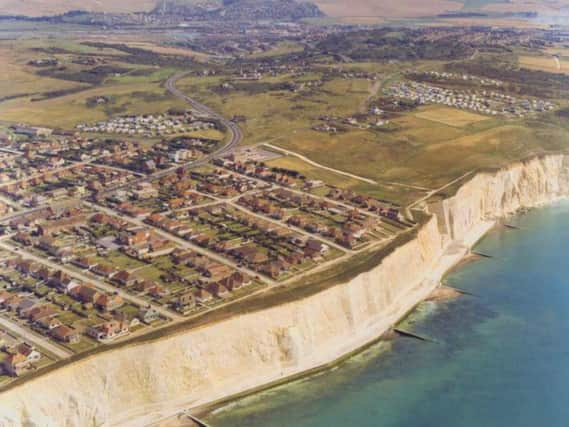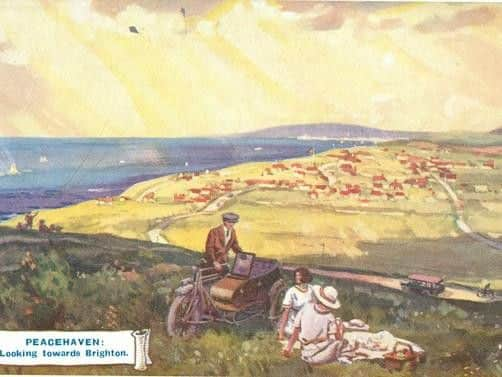Peacehaven founder's clever name game made his fortune


I’m talking of Peacehaven. Not that it was known as such when the town was first established in 1916 by entrepreneur Charles Neville. Instead it had the very odd name of New Anzac-on-Sea, Anzac standing for the Australia and New Zealand Army Corps, an Antipodean military formation formed in Egypt in 1915.
The military theme was continued with the naming of a number of roads after Great War battles, reflecting Neville’s hopes of selling plots of land to returning veterans. However, after the Anzac forces suffered severe casualties in the ill-fated Gallipoli campaign, a change of name to something less military was deemed appropriate; thus the town became Peacehaven.
Advertisement
Hide AdAdvertisement
Hide AdNot that Peacehaven’s links to the Great War ended with the change of name. Three roads commemorate aspects of the conflict; Anzac Close is an unsurprising choice. More intriguing are Edith and Cavell Avenues. Edith Cavell was a British nurse captured by the Germans in Brussels. There was international outrage when she was convicted of “treason” and shot by firing squad on 12th October 1915.


One of the best-known British marching songs of the time was “Pack Up Your Troubles In Your Old Kit Bag” with music composed by Felix Powell. The songwriter later moved to Peacehaven and befriended Charles Neville who, always looking for new ways to publicise his rapidly growing town, asked him to write a pertinent song. “Come to Peacehaven” was the result.
Felix Powell joined the Peacehaven Home Guard in the Second World War. Aged 63, he committed suicide in 1942 using his own rifle while on guard duty.
“Pack Up Your Troubles” features in Joan Littlewood’s “Oh What a Lovely War” and by coincidence many scenes for the film were shot close to Peacehaven, in Ovingdean where a vast field of white crosses was created to symbolize the futility of war. Nearby is St Dunstan’s (Blind Veterans UK) where World War One veteran Henry Allingham lived. He was thought to be the world’s oldest man at the time of his death in 2009 aged 113.
Advertisement
Hide AdAdvertisement
Hide AdIt was 1915 when Charles Neville first set eyes on an expanse of agricultural downland that struck him as an ideal location for a housing estate. Within a year he had acquired a considerable tract of land in the Parish of Piddinghoe for which he paid just £15 per acre. He set up a company to develop it. Neville came from a family of showmen and was born in County Durham in 1881.


As a young man he spent some time in Canada and Australia learning how to deal in land and gold. It was however the showman streak in his blood that made the crucial difference to his fortunes, for he devised a very novel way of promoting his new estate to tremendous effect but at minimal cost.
In January 1916 he featured a competition in the “Daily Express” asking readers to come up with a name for his planned new town. The winner would receive a plot of land worth £100. Artfully, Neville made plenty of other plots (each worth £50) available as consolation prizes, with the proviso that the winners had to pay a conveyance fee of three guineas.
The competition proved immensely popular and attracted some 80,000 entries. The winning name was New Anzac-on-Sea. In the face of this response, Neville had his South Coast Land & Resort Company simply increase the runner up prizes to over 2,400. The canny businessman had recognized an opportunity to unload a large part of his holding and at the same time create an income.
Advertisement
Hide AdAdvertisement
Hide AdThe purchasers paid for the conveyance that transferred the land to them while Neville’s company would sell the new owners either a completed house or the materials with which to build one.
The “Daily Express” eventually turned on Neville and declared his marketing ploy to be fraudulent. The newspaper took Neville to court and the businessman in turn put in a counter-claim for libel.
Although the hearings went as high as the House of Lords, Charles Neville in the end lost the case. But the entrepreneur had the last laugh because all the publicity generated by the legal shenanigans ensured that the world and his wife got to hear of his new town beside the sea.
Neville’s original thought had been for his town to provide inexpensive homes for servicemen and their families.
Advertisement
Hide AdAdvertisement
Hide AdBut the town’s idyllic setting, sea air and promise of a simple lifestyle proved to have wide appeal. The land itself was relatively cheap and dwellings could be built to meet almost any budget.
Peacehaven was suited to a building system known as “Plotlands”. The latter were largely built outside of the conventional planning system and basic houses could be made from anything from recycled army huts to redundant old railway carriages. In this way even working class families could aspire to a home in the country.
By 1924 there were 3,000 people living in Peacehaven. Many of the original houses were temporary and could be replaced or upgraded.
When the local council laid on piped water and power more substantial homes began to appear.